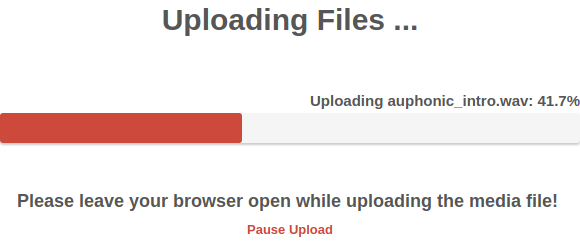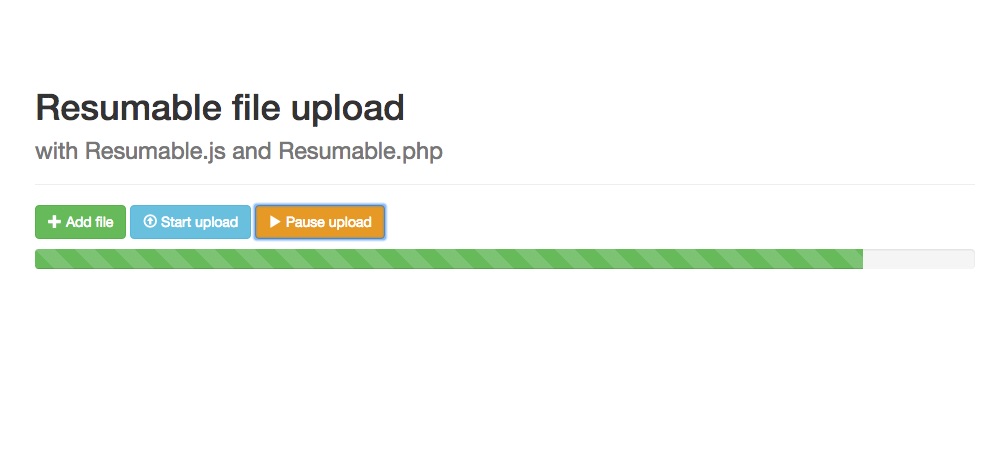In today’s digital age, the seamless transfer of data has become essential for businesses and individuals alike. Whether it’s sharing large files, collaborating on projects, or backing up critical data, file upload plays a vital role in data exchange. However, uploading large files or dealing with unstable internet connections can lead to disruptions and data loss during the upload process. Resumable file upload is a solution to this challenge, offering a reliable and efficient method to ensure data integrity and continuity. In this article, we will explore the concept of resumable file upload, its benefits, how it works, and how it safeguards against interruptions during data transfer.
Understanding Resumable File Upload:

Resumable file upload is a technique that allows users to pause and resume file uploads without losing progress. This feature is particularly valuable when dealing with large files that may take considerable time to upload or when internet connectivity is unstable. Instead of starting the upload process from the beginning after a disruption, resumable file upload enables users to pick up where they left off, ensuring data integrity and continuity.
How Resumable File Upload Works:
Resumable file upload is achieved through the use of unique identifiers called “session IDs” or “upload IDs.” When a user initiates a file upload, the server assigns a session ID to that upload. As the file is being transferred, the client-side application sends the session ID along with the file chunks being uploaded. This session ID allows the server to track the progress of the upload and store it temporarily until the upload is complete.
In case of a disruption, such as a network error or user intervention, the client-side application can simply re-send the session ID to the server when the upload is resumed. This way, the server can identify the ongoing upload session and continue transferring the remaining file chunks without duplicating previously uploaded data.
Benefits of Resumable File Upload:

Data Integrity: Resumable file upload ensures data integrity by preventing data loss or corruption due to interruptions during the upload process. By allowing the upload to be resumed from the point of interruption, resumable file upload guarantees that all data is transferred correctly and completely.
Uninterrupted Uploads: Large file uploads can take a significant amount of time, during which network disruptions or browser issues may occur. Resumable file upload eliminates the need to restart the upload from scratch, saving time and effort for both users and server resources.
Enhanced User Experience: Resumable file upload enhances the user experience by providing a seamless and reliable upload process. Users can have confidence that their files will be successfully uploaded, even if interruptions occur.
Bandwidth Optimization: With resumable file upload, users can optimize their bandwidth usage by resuming uploads instead of re-uploading entire files. This is especially beneficial for users with limited or metered internet connections.
Collaboration and Remote Work: Resumable file upload is particularly valuable for collaborative projects involving teams working from different locations. It ensures that all team members can contribute to large files without worrying about potential disruptions.
Scalability: For businesses dealing with a large number of file uploads, resumable file upload provides scalability by efficiently managing and tracking ongoing uploads.
Implementing Resumable File Upload:
Implementing resumable file upload requires both client-side and server-side configurations. On the client side, the application must handle interruptions during the upload process and store the session ID for resumption. On the server side, the server must be able to store and manage ongoing upload sessions and support the resumption of uploads based on session IDs.
Several web development frameworks and libraries offer resumable file upload capabilities, simplifying the implementation process. Commonly used protocols for resumable file upload include the Blob API, XMLHttpRequest (XHR), and Fetch API in JavaScript. Additionally, some cloud storage providers and file upload services support resumable file uploads as a built-in feature.
Best Practices for Resumable File Upload:

To ensure the successful implementation of resumable file upload, consider the following best practices:
Chunk Size Optimization: Divide large files into smaller chunks for more efficient and reliable uploads. The optimal chunk size depends on factors such as network conditions and server capabilities.
Upload Progress Indicators: Implement progress indicators on the user interface to keep users informed about the status of their uploads and any interruptions that may occur.
Temporary Session Storage: Store session IDs and upload progress temporarily to facilitate resumption in case of disruptions.
Error Handling: Implement robust error handling mechanisms to address any issues that may arise during the upload process, such as network errors or server timeouts.
Timeouts and Retries: Set appropriate timeouts for upload requests and configure retry mechanisms to handle situations where uploads are temporarily stalled.
Compatibility: Ensure that the resumable file upload feature is compatible with a wide range of devices and browsers to offer a consistent experience for all users.
In the digital age, where data transfer and file sharing are integral to business operations and everyday tasks, resumable file upload has emerged as a valuable solution to ensure data integrity and continuity. By allowing users to pause and resume file uploads without losing progress, resumable file upload eliminates the frustrations of disruptions and interruptions during large file transfers. This feature is particularly beneficial for remote work, collaborative projects, and scenarios where network connectivity may be unreliable.
Web developers and businesses can implement resumable file upload through various web development frameworks and libraries or by utilizing cloud storage providers that offer resumable file upload as a built-in feature. By adopting best practices and optimizing chunk sizes, upload progress indicators, and error handling mechanisms, resumable file upload can be seamlessly integrated into applications and services, providing a reliable and efficient data transfer experience for users. With resumable file upload as a foundational element in data exchange, businesses and individuals can confidently share and store large files, fostering enhanced productivity and collaboration in the digital age.


